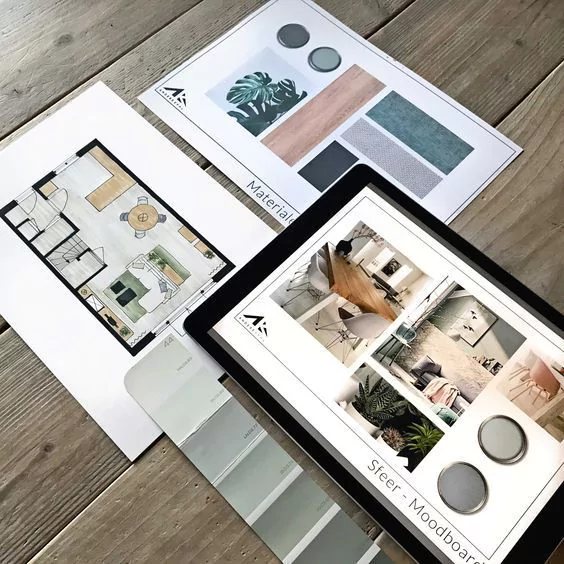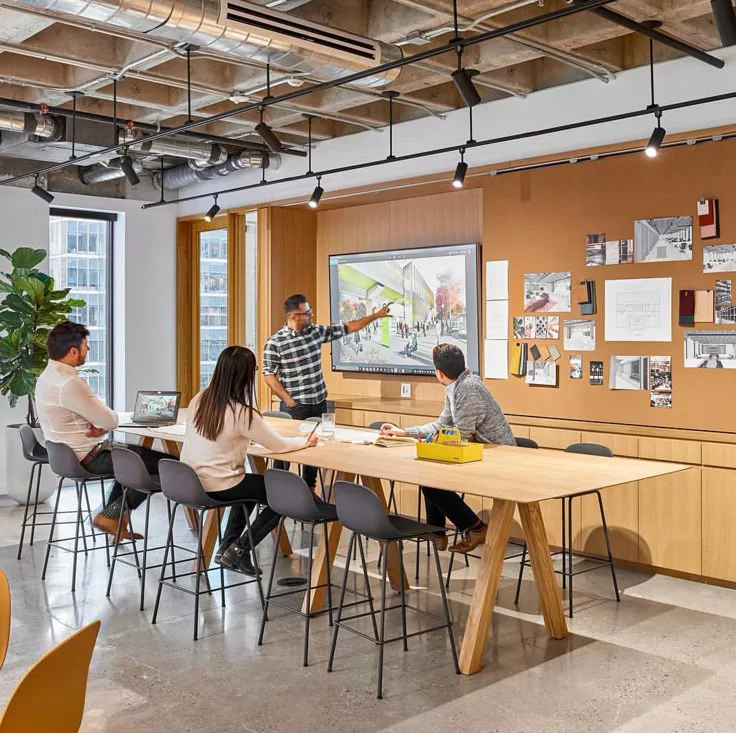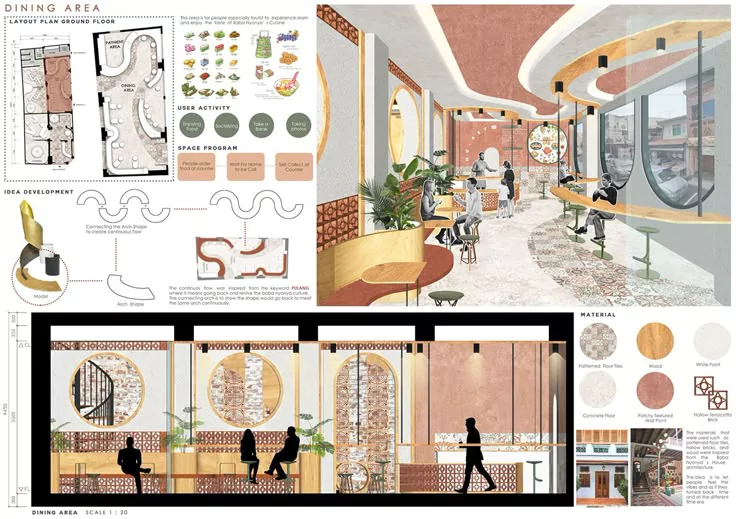
Fashion designer Anna Mason| Unsplash
Design is no longer confined by geography. Hence, the question isn’t just can you work abroad after studying interior design. It’s how soon can you start?
Interior design is undergoing a global renaissance. Cities all around the world are investing heavily in spatial aesthetics that balance function, sustainability, and culture. As India’s design education ecosystem matures and aligns with international standards, interior design students are increasingly looking beyond borders, not only to explore but to make a mark.
Right Education: The way forward
An international interior design career doesn’t necessarily require an overseas degree, but your education must meet global benchmarks. Reputed Indian design institutions—like CEPT, NID, and Pearl Academy are now offering curriculum aligned with international practices. Courses often include exposure to global trends, design softwares, AI Integration, and sustainable design frameworks such as LEED or WELL certifications.

These institutions offer international exchange programs, global internships, and portfolio reviews by global experts. These opportunities are more than academic experiences, they’re doorways to international design cultures.
Skills & Tools
Technical Proficiency
- Mastery of tools like AutoCAD, Revit, SketchUp, 3Ds Max, and Rhino is essential, as most international studios expect fluency in these platforms.
- Proficiency in Adobe Creative Suite (Photoshop, Illustrator, InDesign) and rendering tools like Lumion, V-Ray, or Enscape for compelling presentations.
- Ability to read international building codes such as the IBC (International Building Code), ADA (Americans with Disabilities Act), British Standards, or Green Mark (Singapore).

Design Sensibility
- Understanding regional aesthetics, material preferences, and spatial traditions, such as privacy-conscious design in the Middle East or heritage-sensitive restoration in the UK.
- Awareness of international design trends, sustainability frameworks, and user-centric thinking.
Soft Skills & Professionalism
- Ability to communicate design intent clearly in multicultural teams, both visually and verbally.
- Project Management skills like scheduling, budgeting, and client-handling experience are crucial for mid and senior-level roles.
- Ability to collaborate & form networks to work seamlessly with architects, engineers, and global vendors is a must.

Cross-Border Credentials
- NCIDQ (USA & Canada): The National Council for Interior Design Qualification is often required to practice independently.
- CIDA Accreditation (USA): If your design degree is from a CIDA-accredited program, it gives you an edge.
- BIID Membership (UK): The British Institute of Interior Design offers professional credibility and networking.
- LEED or WELL Certifications: These sustainability-related credentials are globally respected and often required for commercial projects.
Hot-Spots of Growth & Opportunity
Interior designers today are not limited to traditional residential or office spaces. The global market spans luxury hospitality, wellness and spa environments, exhibition and retail design, yacht and aviation interiors, set design for streaming platforms, and even VR/AR spatial experiences are all an integral part of an interior design career.
Top hotspots for interior design careers include:
- Dubai & Abu Dhabi: A growing design economy with high-budget projects and a keen interest in Indo-Arabic fusion aesthetics.
- London: A melting pot of historic and contemporary design, with a strong freelance and agency market.
- Singapore: A hub for sustainable and smart urban design, with a rising need for green interior designers.
- Australia: Especially cities like Melbourne and Sydney, which have a flourishing boutique and residential design scene.
- Canada & the US: Diverse opportunities across hospitality, commercial, and healthcare interiors with a preference for credentialed professionals.
Global Demand, Local Talent
The global appetite for interior designers is growing rapidly, driven by the rise of luxury living, immersive hospitality, and human-centered commercial and office spaces. In the United States the interior design careers are expected to grow by 4% by 2032, especially in residential, healthcare, and sustainability-driven projects. The United Kingdom is also thriving, with its creative industry adding over £115 billion to the economy in 2021.
The Middle East is seeing a design revolution. With Saudi Arabia’s Vision 2030 and Dubai’s rapid urban growth, the region’s interior design market is set to grow by 8.47% by 2029. The UAE alone is projected to hit nearly USD 5 billion by 2030, while Saudi Arabia is investing over USD 1.3 trillion in real estate and mega-projects.
Meanwhile, Singapore has become Asia’s design hub, with a thriving SGD 5.8 billion market powered by smart city projects and sustainable living. Interior designers are now among the top ten creative occupations in demand under the country’s Smart Nation roadmap, reaffirming Singapore’s position as a launchpad for cutting-edge design careers in Asia.
The Portfolio is Your Passport
No matter how strong your resume is, your portfolio will take your interior design career a notch higher. It should demonstrate not only your design skills but also your conceptual clarity, process, adaptability to different cultures, and sensitivity to context. Showcasing work across disciplines, like collaborations with fashion, architecture or digital art, can become the X-factor.

Reality Check: Challenges to Prepare For
While the international design world is welcoming, it’s not without hurdles. Cultural adjustment, visa constraints, licensing exams, and intense competition are part of the journey. However, with the right mix of preparation, mentorship, and adaptability, these become stepping stones to enhance your interior design career. You may start with freelance or remote projects that allow you to work with international clients while based in India. Platforms like Behance, Upwork, and Archinect often feature global design opportunities. These experiences not only build your portfolio but also introduce you to working across time zones and make you aware of client expectations.
The Verdict: Yes, You Can.
An interior design career abroad is not just a dream, it is a tangible, achievable path for Indian students today. It requires intention, preparation, and a clear sense of direction. But most importantly, it requires you to see yourself not just as a designer, but as an individual capable of translating stories into spaces, across languages and borders.
So, if you’re wondering whether your design education can take you global, the answer is clear: it absolutely can.
References
-
- https://www.upgrad.com/study-abroad/articles/how-to-become-an-interior-designer/
- https://resumetrick.com/blog/interior-design-certification.
- https://www.mordorintelligence.com/industry-reports/gcc-interior-design-services-market
- https://www.mordorintelligence.com/industry-reports/united-arab-emirates-interior-design
- https://www.agbi.com/real-estate/2023/11/pif-expects-1trn-real-estate-spending-over-next-decade/?
- https://myfuture.com/occupations-industries/occupations/interior-designers/?
- https://lordslibrary.parliament.uk/impact-of-government-policy-on-the-creative-sector/?
